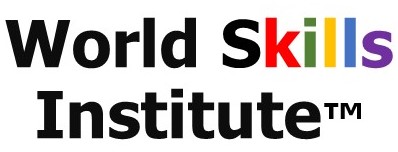
Course Curriculum:
Lesson 01 – Course Introduction
Lesson 02 – Agile Principles and Mindset – Part 1
Agile Principles and Mindset – Part One
Introduction to Agile
Agile Engineering Practices
The Agile Manifesto
Agile Manifesto Explained
Principles of Agile Manifesto
Applying the Principles of Agile Manifesto
Agile Core Principles and Practices
Benefits of Agile
Project Life Cycle Characteristics
Key Takeaways
Knowledge Check
Lesson 03 – Agile Principles and Mindset – Part 2
Agile Principles and Mindset – Part Two
Agile Methodologies
Agile Mindset
Where to Apply Agile
Meaning of Scrum
Features of Scrum
Three Pillars of Scrum
Scrum Roles
Key Terms of Scrum
Scrum Meetings
Scrum: An Empirical Process
Extreme Programming
Extreme Programming Practices – Part A
Extreme Programming Practices – Part B
Roles in Extreme Programming
Process Diagram of XP
Crystal Method
Properties of Crystal Method
Key Categories of Crystal Method – Part A
Key Categories of Crystal Method – Part B
Dynamic Systems Development Method (DSDM)
Basic Principles of Atern
Planning Philosophy in DSDM
DSDM Techniques
DSDM Phases
Feature-Driven Development
Agile Project Management
Key Takeaways
Knowledge Check
Lesson 04 – Value-Driven Delivery – Part 1
Value-Driven Delivery – Part One
Quantifying Customer Value
Time Value of Money
Time Value of Money: Example
The Financial Feasibility of Projects
Return on Investment ROI
Net Present Value (NPV)
Net Present Value (NPV): Example
Internal Rate of Return (IRR)
Payback Period
Payback Period: Example
Prioritization of Functional Requirements
MoSCoW
Kano Model
Relative Weighting
Prioritization of Non-Functional Requirements
Risk Management in Agile
Key Takeaways
Knowledge Check
Lesson 05 – Value-Driven Delivery – Part 2
Value-Driven Delivery – Part Two
Minimal Viable Product
Project Planning Using MVP
Agile Compliance
Key Drivers of Agile Compliance
Incremental Delivery
Review and Feedback
Earned Value Management
Earned Value Metrics
Earned Value Metrics: Example
Agile Contracts: Components
Agile Contracting Methods
Fixed-Price or Fixed-Scope Contract
Time and Materials (T and M) Contract
T and M with Fixed Scope and Cost Ceiling
T and M with Variable Scope and Cost Ceiling
Bonus or Penalty Clauses
Rolling Agile Contracts
Terms Used in Agile Contracts
Key Takeaways
Knowledge Check
Lesson 06 – Stakeholder Engagement – Part 1
Stakeholder Engagement – Part One
Stakeholder Engagement
Project Charter
Understanding Stakeholder Needs
Agile Wireframes
User Story
Story Card Information
Agile Personas
Theme and Epic
Agile Story Maps
Community and Stakeholder Values
Key Takeaways
Knowledge Check
Lesson 07 – Stakeholder Engagement – Part 2
Stakeholder Engagement – Part Two
Community Management
Communication and Knowledge Sharing
Social Media Communication
Information Radiators
Burnup and Burndown Charts
Kanban or Task Board
Impediment Logs
Characteristics of Information Radiators
Agile Modeling
Active Listening
Key Elements of Active Listening
Globalization Diversity and Cultural Sensitivity
Cultural Diversity Issues: Recommendations
Agile Facilitation Methods
Agile Negotiation and Conflict Management
Five Levels of Conflict
Key Takeaways
Knowledge Check
Lesson 08 – Team Performance – Part 1
Team Performance – Part One
Features and Composition of Agile Teams
Stages of Agile Team Formation
High Performance Teams
Generalizing Specialist
Team Responsibility
Self-Organization
Key Takeaways
Knowledge Check
Lesson 09 – Team Performance – Part 2
Team Performance – Part Two
Agile Leadership
Best Practices of Agile Leadership
Management vs Leadership
Servant Leadership
Coaching and Mentoring
Agile Coaching
Agile Emotional Intelligence
Team Motivation
Maslow’s Theory
Frederick Herzberg’s Theory
McClelland’s Theory
Boehm’s Theory
Team Space
Co-Located Teams
Distributed Teams
Co-Located vs. Distributed Teams
Osmotic Communication
Team Collaboration and Coordination
Collaboration Technology
Communication Gap-Example One
Communication Gap-Example Two
Brainstorming Sessions
Team Velocity
Velocity-Example One
Velocity-Example Two
Sample Velocity Chart
Velocity-Example Two
Agile Tools
Knowledge Check
Lesson 10 – Adaptive Planning – Part 1
Adaptive Planning – Part One
Planning Philosophy
Aligning Agile Projects
Rolling Wave Planning
Timeboxing
Best Practices of Timeboxing
Advantages of Timeboxing
Agile Estimation
Story Points
Assigning Story Points
Story Points Estimation
Story Points Estimation Scale: Example
Value Points
Ideal Days
Story Points vs. Ideal Days
Wideband Delphi Technique
Planning Poker
Planning Poker: Example
Affinity Estimation
Key Takeaways
Knowledge Check
Lesson 11 – Adaptive Planning – Part 2
Adaptive Planning – Part Two
Project Size Estimation
Release Plan
Release Plan: Example
Iteration Plan
Types of Iteration Planning
Iteration Lifecycle: Example
Release Plan vs. Iteration Plan
Agile Product Roadmap
Backlog Refinement – Part Two
Value-Based Analysis and Decomposition
Agile Cone of Uncertainty
Velocity Variations
Sprint Reviews
Sprint Retrospectives
Mid-Course Corrections
Key Takeaways
Knowledge Check
Lesson 12 – Problem Detection and Resolution – Part 1
Problem Detection and Resolution – Part One
Agile Problem Detection
Problem Detection Techniques
Fishbone Diagram
Five Whys Technique
Control Charts
Lead Time and Cycle Time
Kanban
Kanban Process
Example of Kanban Board
Work In Progress
Managing Constraints
Little’s Law
Escaped Defects
Agile Problem Solving
Key Takeaways
Knowledge Check
Lesson 13 – Problem Detection and Resolution – Part 2
Adaptive Planning
Metrics and Measures
Benefits of Metrics
Examples of Metrics
Baseline Metrics
Variance and Trend Analysis
Risk Management Life Cycle
Step One-Risk Identification
Step Two-Risk Assessment
Step Three-Risk Response Strategies
Step Four-Risk Review
Risk Log
Risk Burndown Chart
Risk Profile Graph
Spike
Agile Failure Modes
Agile Coach Failure Modes
Troubleshooting Guidelines
Key Takeaways
Knowledge Check
Lesson 14 – Continuous Improvement – Part 1
Continuous Improvement – Part One
Kaizen
Kaizen in Agile
Lean
Defining Waste Manufacturing and Software Development
A Five Step Process to Becoming Lean
Value Stream Mapping
Agile Retrospectives
Cargo Smells
Conducting a Retrospective
Brainstorming Techniques
Process Analysis Techniques
Agile Process Tailoring
Project Factors That Influence Tailoring
Key Takeaways
Knowledge Check
Lesson 15 – Continuous Improvement – Part 2
Continuous Improvement – Part Two
Quality in Agile
Best Practices for Quality in Agile
Best Practice One: Verification and Validation
Best Practice Two: Exploratory Testing
Best Practice Three: Usability Testing
Best Practice Four: Test-Driven Development
Test-Driven Development Advantages
Acceptance Test-Driven Development Cycle (ATDD)
Best Practice Five: Continuous Integration
Best Practice Six: Definition of Done
Testing Pyramid and Quadrant
Checklist for Story Completion
Agile Flowchart
Agile Spaghetti Diagram
Organizational Self Assessment
Key Takeaways
Knowledge Check
DURATION: 3 DAYS
PRICE: $2,499 per participant
